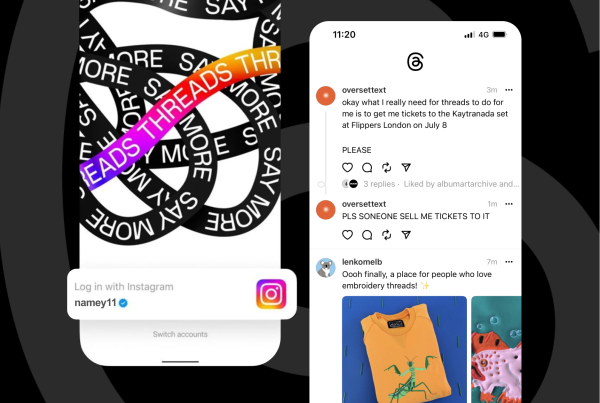
There’s nothing wrong with the humble blog. But if brands look at it like it’s simply the bit tacked on to the side of their website where they store words about some award they won last year, their customers will treat it with the same sense of neglect.
Instead, brands should approach their blog with the mindset of a publisher – to educate, engage and entertain their audience. And if they’re really serious, maybe it should become something bigger. Its own brand. Its own platform.
These brands saw the potential to make their blog something bigger, different and infinitely more engaging. Something their audiences truly want to spend time with. To win attention, yes. But more importantly, to keep it.
1. Work Life by Atlassian
Atlassian knows its customers are startups, small businesses and enterprise teams that crave information about running and growing their businesses. But instead of taking on the extremely broad topic that is small business and startup advice for their blog, the brand added a content tilt in line with their strength of helping teams manage their workload and work together better in general. Atlassian’s blog Work Life is all about creating, managing and fostering engagement in teams. They’ve absolutely nailed a voice that appeals to their audience (I know, because I’m in that audience), and the commitment to custom graphics is next level. Everyone in your small business or startup team will benefit from this blog.
In the words of Denim Reynholm, “Team, team, team. I even love saying the word team.”
2. Pursuit by The University of Melbourne
Do you know what universities literally own? Thought leadership. They’re physically packed with researchers and scholars who are exploring new ways of doing things that have a huge impact. They lead thoughts in everything from fashion to science (and probably fashion science, who knows?). So it makes absolute sense for them to own and share these insights. The University of Melbourne is doing just that with its publication Pursuit – a highly authoritative blog that showcases the university’s thought leaders. It’s become a destination for anyone who attends, teaches or works with the university and it’s no surprise as it’s quality content that people want to read. Imagine if this was restricted to the blog section on the university’s website? That would be sad.
3. First Five Years by Goodstart Early Learning

Confronted with the task of engaging an audience that literally has a gazillion mum blogs already catering for it, Goodstart Early Learning turned to help not hype. Packed with studies, reports, first hand accounts and more incredibly authoritative subject matter, the First Five Years publication answers every question and concern a parent could have for their children in their first five years. Good Start Early Learning absolutely could have had this information on their main website – but that would have been a major missed opportunity to offer up information from an independent and therefore more authoritative voice. For Goodstart Early Learning, having First Five Years separate meant it could build an audience and community alongside their brand. Oh, and collect some sweet and delicious data along the way.
4. Bluenotes by ANZ
Bluenotes by ANZ is a “forum for insights, opinion, research and news about the economy, financial services, investment and society, from within ANZ and outside”. It’s more or less a stand alone publication that gives the brand a platform to share insights and add value to their customers. Put simply, they’ve created a bank blog worth reading. Every bank has a blog, but they’re hardly destinations for people wanting insightful and engaging reads about the finance industry. By separating the blog from the main brand, ANZ has created a space for quality content and packaged it in a way that’s easy to consume. Win.
5. Redshift by Autodesk
Autodesk creates software tools with the power to make anything, used for everything from designing architecture to infrastructure and even manufacturing technology. So it’s no surprise that Autodesk’s blog Redshift is all about making. “We explore the future of making: how products, buildings, and cities will be built tomorrow — and even 100 years from now.” Redshift started out as a blog on the Autodesk website, but after being noticed by a whole bunch of awards programs, they broke it off to be its own thing. Redshift by Autodesk has a team of 15 people creating, curating and publishing content on a day-to-day basis.
“We want to help designers and engineers design a better and more sustainable world for future generations.” What a beautiful content mission.
6. AWOL by Junkee and Qantas

Travel blogs are a dime a dozen. To stand out from the crowd and appeal to a younger audience, Qantas teamed up with Junkee Media to launch AWOL. “AWOL is a title that’s all about inspiring young Australians to travel the world. From throwing a towel into the back seat of your car to strapping on hiking boots and exploring the Himalayas, it’s an amazing world out there and we aim to show you why.” It’s safe to suggest that Qantas’ objective is to get younger Australians to travel with the airline. Having this as a separate platform and in conjunction with Junkee Media has allowed the brand to adopt a more relevant voice than would normally come from the Qantas brand. And while travel is about the journey and not the destination, this blog is a definite destination for young travellers looking for tips and inspiration. #Wanderlust





